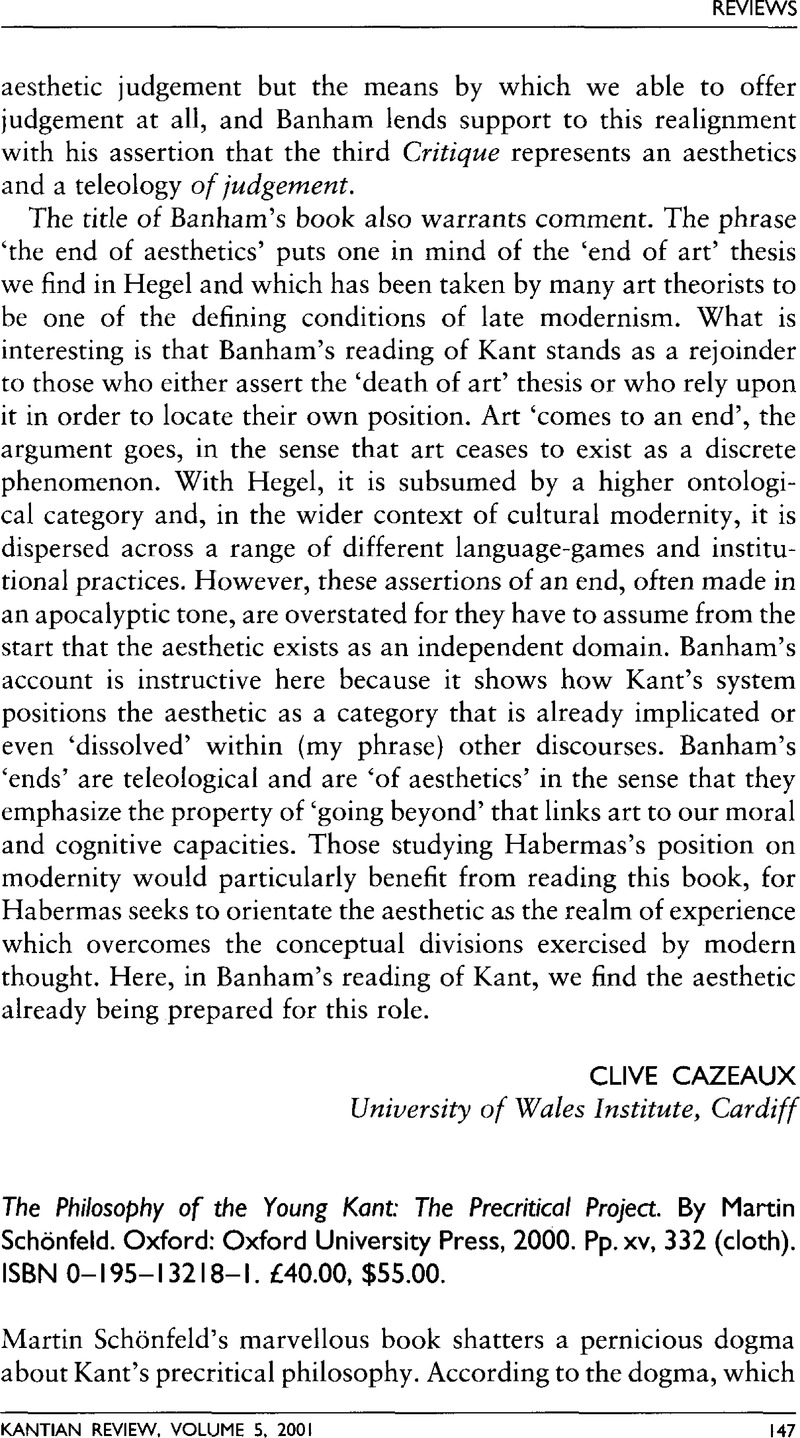No CrossRef data available.
Published online by Cambridge University Press: 25 March 2011

1 Laywine, Alison, Kant's Early Metaphysics (Altascadero, CA: Ridgeview, 1993).Google ScholarShell, Susan, The Embodiment of Reason (Chicago: University of Chicago Press, 1996).Google ScholarWatkins, Eric, ‘Kant's theory of physical influx’, Archiv für Geschichte der Philosophie, 77 (1995), 285–324.CrossRefGoogle Scholar For the traditional view see Guyer, Paul and Wood's, Allen introduction to their translation of the Critique of Pure Reason (Cambridge: Cambridge University Press, 1988), pp. 27–8.Google Scholar
2 One of the best treatments is Laywine's Kant's Early Metaphysics.
3 For example, Ernst Cassirer argued that the young Kant was deeply influenced by Hume; see Kant's Life and Thought, tr. James Haden (New Haven, CT: Yale University Press, 1981). Shell emphasizes Rousseau's influence in Embodiment of Reason. Claims about Swedenborg's allegedly decisive influence appear in Vaihinger, Hans, Kommentar zu Kants Kritik der Reinen Vernunft (Stuttgart: Union Deutsche Verlagsgesellechaft, 1922)Google Scholar, vol. 2, and Palmquist, Eric, ‘Kant's critique of mysticism (I)’, Philosophy and Theology, 3 (1989), 355–84.CrossRefGoogle Scholar
4 See Ameriks, K., Kant's Theory of Mind (Oxford: Clarendon Press, 1982), pp. 11–17.Google Scholar
5 For more on this point, see Carpenter, Andrew, ‘Kant's earliest solution to the mind/body problem’ (Ph.D. dissertation, University of California at Berkeley, 1998).Google Scholar
6 Other commentators have stressed Kant's consistent enchantment with Newton. For example, in his influential book on Kant's philosophy of nature Michael Friedman argues that Kant was a lifelong Newtonian who was captivated by Newtonian universal gravitation by the time he published Living Forces. See Kant and the Exact Sciences (Cambridge, MA: Harvard University Press, 1992), p. 5.
7 See Living Forces, part 1, sections 9–12 (Ak. 1:23–5). When I discussed this issue with him, Schönfeld maintained that Kant's discussion of the inverse square law does not refer to Newtonian gravitational attraction.